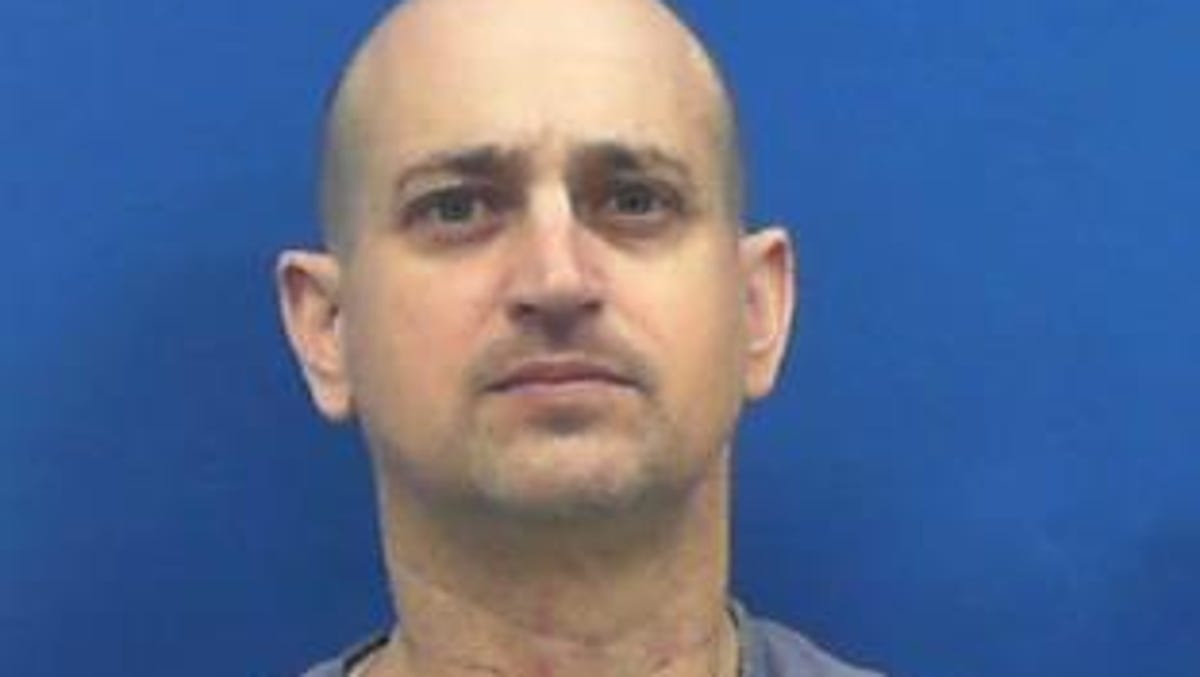Minneapolis, MN
From rails to trails: Stone Arch Bridge links Minneapolis' past to present

Maury’s Stories: Stone Arch Bridge
A longstanding fixture in Minneapolis, this Maury’s Stories goes in-depth on the history of the Stone Arch Bridge – a popular attraction to this day.
MINNEAPOLIS (FOX 9) – Above the rushing waters of the Mighty Mississippi, a testament to engineering and ingenuity stands tall.
“It’s a great color and also has a gentler appearance than you would guess with how heavy it is. This curve at the back makes it really special,” said amateur historian Vince Netz.
With its gleaming arches and golden hu, the Stone Arch Bridge has become a symbol of the city it calls home.
But underneath all the rock and mortar, there’s a hidden history with more stories than there are stones on the beloved landmark.
“There’s no reason to be here other than the waterfall and the railway. so the origin story for the city is on this bridge,” said Netz.
In the late 1800s, Minneapolis was a roaring boom town, where the population had more than doubled in less than a decade. The city hired railroad baron James J Hill to build a giant train station to integrate what was then a mess of railway lines into one place.
“It was bad for flour and lumber shipping. It was worse for passengers. They wanted to make the city’s economic future better by building a railway station. To get there, they had to get across the river,” said Netz.
At first, Hill wanted to build an iron bridge directly over nearby St Anthony Falls but his engineer told him that would destroy the falls. So they started construction just to the south in 1882, with 600 people working around the clock.
Five trains a day carried limestone, granite, and marble quarried in Minnesota, Iowa, and Wisconsin.
“The idea behind the stone is that it could hold a lot of weight and I think James J Hill, his ego was in it too. It’s a big bridge. It’s very much a testament to his power, to his wealth and to his capability. No one was denying James J Hill and his ability once this bridge was constructed,” said MnDOT historian Katie Haun Schuring.
When the project was finished 22 months later, it was considered a modern marvel, with its 23 stone arches, S-shaped structure and six degree curve at the end creating a smooth and scenic path to bring passengers into the heart of Minneapolis.
At its peak, nearly 100 trains a day crossed the bridge and helped Hill expand his empire and conquer The West.
“It was considered a folly at the time. People didn’t really think it was a great idea. Construction was very expensive, but time has told a different tale,” said Haun Schuring.
The Stone Arch remained a railroad bridge until the late 1970s when it was abandoned, as the public began to use the interstate highway system for travel and commerce instead. It sat unused until the 90’s when it was refurbished as a pedestrian and bike bridge with a new deck and decorative railings.
“In the 90s, there was this idea of rails to trails where abandoned rail lines would become trail systems. Here’s this great resource in the middle of Minneapolis that is no longer being used as a rail line so what can we do with it? Turning it into a pedestrian bridge, a trail system made a lot of sense,” said Haun Schuring.
Over the years, two arches were replaced by a steel truss for the lock and dam and two others are now supported by concrete because of a flood. But more work needs to be done, so the bridge is now closed to replace the mortar and some stones to preserve the bridge for the future.
“I think it is one of the most important and interesting bridges in the state. I think it tells the story of one man’s rise to power and fortune. It tells the story of transportation use over time from railroads to trails. I think it is also one of those things that if it weren’t there, there would be a big loss within the community,” said Haun Schuring.
The Stone Arch is the only bridge of its kind on the Mississippi and the second oldest bridge on the river.
It is also on the National Register Of Historic Places, a vital link in the center of the city for more than a century.
“There are more bridges that have more technical complexity to them, but there is only one Stone Arch,” said Netz.

Minneapolis, MN
Man sentenced to 12 years in prison for attempted murder in shooting of Minneapolis police officer

Olivia Spies, 12, crossed the courtroom gripping a lined piece of notebook paper and gathered her strength. Her dad stood beside her, gently placing a hand on her back as she conveyed the pain their family endured when a stranger shot and wounded him in the line of duty last summer.
“What he did was horrific and devastating to me — and I will never forgive him,” she told the judge Thursday, recounting the shooting of Minneapolis police officer Jacob Spies. “My dad is a hero and does many courageous things for people he doesn’t even know.”
Fredrick Davis Jr., 19, of Minneapolis, received a 12-year prison sentence and was convicted of attempted second-degree intentional murder during an emotional hearing Thursday, packed with uniformed police officers and command staff. Davis pleaded guilty last month, admitting to firing a dozen rounds at Spies, who was driving an unmarked car with tinted windows, on Aug. 11 during a joint enforcement detail on the North Side.
But Davis denied intentionally targeting a police officer, saying he pulled the trigger out of fear.
In his victim impact statement, Spies recounted how he’d been patrolling alone when he spotted a white SUV suspected of fleeing police following a robbery an hour earlier. He pursued the vehicle for about a mile and, just as he crested a hill, noticed the Chevy parked with its lights off.
Suddenly, Spies was overtaken by a volley of automatic gunfire — a sensation similar to having fireworks thrown at his car — and felt his right arm go numb.
He frantically radioed for help and sped away from the scene, expecting to drive himself to the hospital. But responding officers intercepted their wounded colleague and police initiated a high-speed chase that continued for 26 blocks until the Chevy crashed into a parked car.
The bullet remains embedded in the back of Spies’ shoulder, “a permanent souvenir” from that chaotic night.
“This was a calculated and planned ambush,” said Spies, a seven-year MPD veteran who was awarded a Medal of Honor and the department’s first Purple Heart. He lamented that Davis influenced a younger boy into participating and continued down a path of “felonious criminal activity” several years after Spies arrested him fleeing police in a stolen vehicle.
In December, a 17-year-old who shot at Spies but didn’t strike him also pleaded guilty to attempted second-degree murder. As part of his plea deal, William Ward Jr. is receiving treatment at the Red Wing juvenile facility and will remain on extended probation until he’s 21.
Senior Assistant County Attorney Patrick Lofton noted that Davis was riding around with multiple guns — one fully automatic and the other an unregistered ghost gun — with a juvenile in the car. It was mere luck that Spies survived the ordeal, he said, arguing that Davis’ actions demonstrated an extreme risk to public safety.
“His behavior exhibits a worldview in which you shoot first and ask questions later,” Lofton said, imploring Hennepin County Judge Hilary Caligiuri to impose a nearly 13-year prison term, the top of the sentencing guidelines box.
In response, Davis’ public defender Elizabeth Karp urged the court to consider the context. Davis survived a gunshot wound to the chest a year prior at the State Fair, resulting in lasting trauma. It made him afraid to leave the house, she said, and he obtained a firearm from a relative for protection.
Karp pushed back on the prosecutions’ depiction of Aug. 8, explaining that Davis saw an unknown vehicle following him that night and immediately “kicked into a fight or flight mode.”
“Mr. Davis made a bad choice in a panicked state of mind,” Karp said, acknowledging that it was not an excuse for what happened. “I don’t think the evidence shows that he knew who was in that car.”
She asked that the judge sentence Davis to 11 years, the lowest end of the box.
When given a chance to speak, Davis turned to his family in the front row and broke down explaining that he “didn’t know it was a police officer.” Davis said he took responsibility for crime, but denied forcing anyone else to participate or ever fleeing police that day.
“I’m not a bad person at all…I got family too,” he said, sniffling as he pleaded with the judge for a lighter sentence. “Everybody should get a second chance at life. Everybody makes mistakes.”
Caligiuri opted for a sentence near the top of the range, taking six months off for his willingness to accept a plea deal. Davis will spend less than 8 years in prison after accounting for time already served. In Minnesota, those sentenced to prison spend two-thirds of the sentence in custody and one-third under supervision.
His family left the courtroom wiping their eyes, then walked through a flank of two dozen uniformed officers taking turns embracing Spies in the hallway.
Outside, Davis’ mother who declined to be identified defended the character of her son, a high school graduate and “a good person… who has been through more than what people actually know.”
“To know Fred is to love Fred,” she said.
In the lobby, surrounded by fellow officers and Chief Brian O’Hara, Spies hailed the conclusion of a long criminal justice process that has weighed on his family.
“I’m glad it’s over,” he said, thanking the broader law enforcement community for their outpouring of support. “It means a lot to me.”
Minneapolis, MN
Man to be sentenced Thursday for shooting undercover Minneapolis officer

On Thursday, a man who pleaded guilty to shooting at – and injuring – a Minneapolis police officer will be sentenced.
As previously reported, Officer Jacob Spies – who was undercover at the time – was shot in the shoulder while in an unmarked vehicle by 19-year-old Frederick Leon Davis Jr.
Prosecutors say Davis fired at least 15 shots at Spies, and court documents say a bullet narrowly missed a main artery in Spies’ right arm.
Federal affidavit shows Minneapolis officer narrowly escaped death
While Spies was released from the hospital later that night, he has since received the first-ever Purple Heart from the city, as well as a medal of honor.
2 MPD officers receive Purple Hearts for injuries sustained in the field
Last month, Davis entered a guilty plea to an attempted murder charge last month and is expected to receive a sentence that lasts at least 11 years.
Court documents state Spies was following a vehicle that was reported to be involved in a spree of robberies and carjackings in Brooklyn Park. It goes on to say one of two recovered guns was converted into an automatic weapon, which was linked to five different shootings in the Twin Cities area.
A teenager also pleaded guilty to his role in the case back in December. A woman accused of aiding Davis later had her case dismissed due to lack of probable cause.
2 charged in shooting that hurt Minneapolis police officer
Teen arrested, charged in August shooting that injured Minneapolis police officer
Case against woman accused of aiding suspect in officer shooting dismissed
The sentencing is scheduled to begin at 9:30 a.m. in Minneapolis. Check back for updates.
Minneapolis, MN
Minneapolis: May 31, 2024
-

 Politics1 week ago
Politics1 week agoBiden takes role as bystander on border and campus protests, surrenders the bully pulpit
-

 Politics1 week ago
Politics1 week ago'You need to stop': Gov. Noem lashes out during heated interview over book anecdote about killing dog
-

 Politics1 week ago
Politics1 week agoRFK Jr said a worm ate part of his brain and died in his head
-

 News1 week ago
News1 week agoMan, 75, confesses to killing wife in hospital because he couldn’t afford her care, court documents say
-

 World1 week ago
World1 week agoPentagon chief confirms US pause on weapons shipment to Israel
-

 Politics1 week ago
Politics1 week agoHere's what GOP rebels want from Johnson amid threats to oust him from speakership
-

 World1 week ago
World1 week agoPro-Palestine protests: How some universities reached deals with students
-

 World1 week ago
World1 week agoConvicted MEP's expense claims must be published: EU court



















